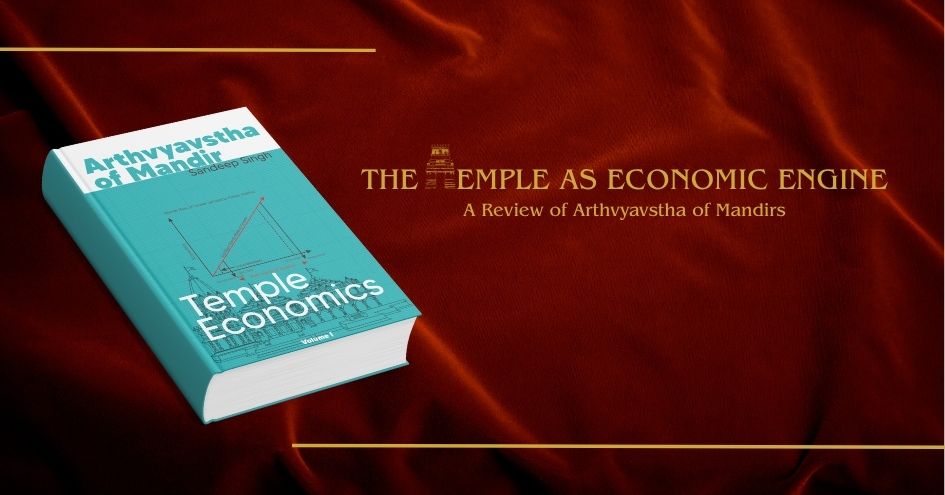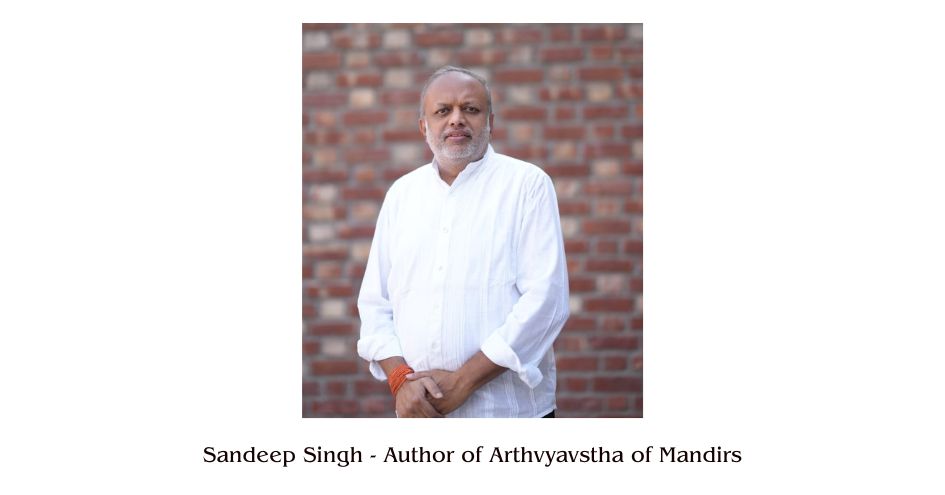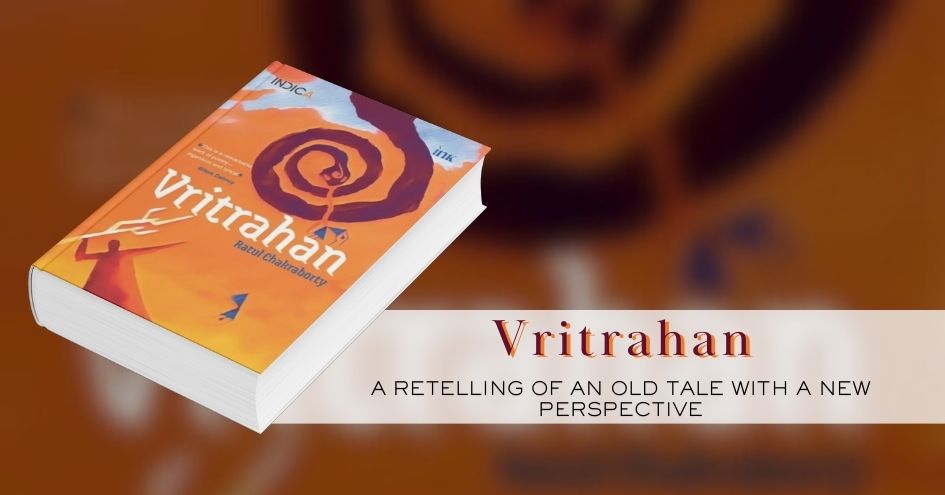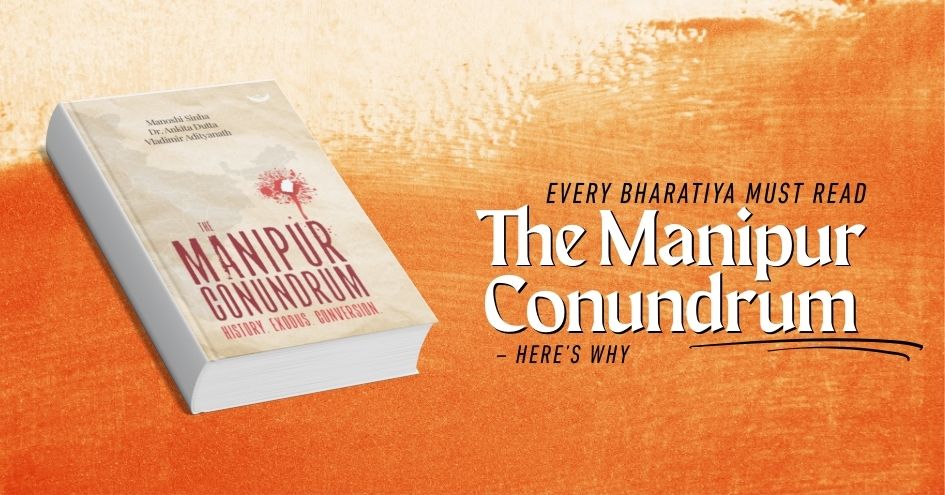
In Arthvyavstha of Mandir’s, Sandeep Singh has accomplished something both courageous and necessary: a detailed, unflinching excavation of India’s neglected temple-based economy. Far beyond the simplistic perception of temples as sites of piety alone, Singh’s work reveals how mandirs historically anchored and shaped the socio-economic life of Bharat, and how their systematic dismantling has contributed to India’s present-day distortions of identity, economy, and culture.
The book opens with a foundational clarification in the first chapter, Temple or Mandir, Economics or Arthvyavstha. Here, Singh distinguishes between the temple as an architectural edifice and the mandir as a civilizational nucleus, a subtle yet profound distinction many contemporary citizens miss. He argues that industrial economics, as we have inherited from colonial modernity, divorces production from purpose, while arthvyavstha—the Indic science of wealth and prosperity—integrates material abundance with dharmic obligations. This conceptual clarity provides the scaffolding on which the rest of the book confidently builds.
The second chapter is particularly arresting, exploring how mandir-based revenues have been appropriated and mismanaged by successive governments. Singh’s case studies of Palani Mandir and Jwalamukhi Mandir are exemplary in their attention to historical detail, showing how institutions that once sustained communities are now stripped of autonomy and wealth, often to fund purposes antithetical to the temples themselves. His argument is not merely rhetorical; it is backed by archival records and data that challenge the standard narrative of benign state stewardship.
Perhaps the most compelling portion of the book is Singh’s historical elucidation of why a mandir-based arthavyavastha was conceptualized in the first place. Using vivid examples—from the saree as a product of temple patronage, to the Meenakshi Amman Mandir as an economic and cultural nucleus—he demonstrates how Indic society organically wove together spiritual and material life. The chapter on the mandir as a nucleus of arthavyavastha is rich with insights and delightful case studies: rangoli as a visual grammar of abundance, lentils preserved through temple distribution systems, and even the story of Shitala Mata—vilified today, but once a civilizational force who safeguarded public health.

The breadth of Singh’s narrative is astonishing. He moves seamlessly between karmakanda rituals, jasmine flowers sustaining Madurai’s perfumery, prasad economies, the vibrant handicraft and performance traditions that temples nurtured, and the rise of iconic practices like the Venkatesha Suprabhatam. One comes away with the sense that the mandir was never merely a religious institution but a dynamic node of trade, agriculture, art, music, and social cohesion.
Equally powerful is the second part of the book, chronicling the systematic destruction of the mandir ecosystem. Singh writes with righteous clarity about the onslaught of Islamic invasions, including Aurangzeb’s destruction of thousands of temples. But he does not leave readers with a narrative of victimhood alone—he balances it with inspiring accounts of resilience, such as Ahilyabai Holkar’s temple rebuilding efforts. The author meticulously traces how missionary zeal and colonial secularism further eroded temple institutions, hollowing out practices like devadasi dance traditions, removing music from temples, and criminalizing community-based patronage.

Of particular interest is Singh’s dissection of modern political and media complicity in the continued erosion of the mandir ecosystem. From the demonization of the matha-based arthavyavastha, exemplified in the arrest of Kanchi Shankaracharya Jayendra Saraswati ji, to the coordinated vilification of the Kumbh Mela during the Covid-19 pandemic, the book shows how global and domestic forces converge to frame Hindu civilizational expressions as regressive, corrupt, or dangerous. This section is both enraging and illuminating, revealing a pattern too often ignored by mainstream scholarship.
In Part Three, Singh shifts focus to post-Independence India, charting the deliberate policies and social engineering that have further marginalized temples. The case study of Sabarimala underscores how judiciary, bureaucracy, and political actors combine to erode centuries-old customs under the guise of progressivism or secularism. Singh is unsparing in naming the ecosystem that benefits from the temple’s decline—corporate interests, ideological NGOs, and an elite establishment increasingly alienated from India’s civilizational core.
The final part is a call to action. Singh proposes the concept of the “mandir rate of growth,” a framework to measure how revitalizing temple ecosystems can catalyze prosperity in the modern era. He argues that the rise of Bharat after 1991—economic liberalization, cultural reawakening, and political assertion—has re-opened possibilities for reclaiming temple-based Arthvyavstha as a legitimate developmental model.
What makes Arthvyavstha of Mandir’s so significant is that it neither romanticizes the past nor reduces it to nostalgia. Instead, it offers a robust framework to understand why mandirs must be seen not as vestiges of superstition but as blueprints for holistic prosperity. Singh’s prose is lucid, evidence-rich, and emotionally resonant. While some readers might find the breadth of topics—from sarees to sea trade to music—a bit overwhelming, this very expansiveness mirrors the integrated worldview he advocates.
In an age when India’s economic thinking is still tethered to colonial categories, Sandeep Singh’s book is an invitation to rediscover the indigenous knowledge systems that once made Bharat a civilizational superpower. It is both a lament for what was lost and a manifesto for what must be reclaimed. Anyone serious about understanding India’s past—and envisioning its future—would do well to engage with this important work.
 Professor Aditya Trivedi is the Director of the Rashtram School of Public Leadership.
Professor Aditya Trivedi is the Director of the Rashtram School of Public Leadership.

Saiswaroopa Iyer is an author who needs no introduction. She is one of the authors who pioneered Puranic fiction in India with books exploring tales f...

Indra killed Vritra using his Vajra. Once again, good won over evil and dharma over adharma. This is a story most Bharatiyas know. The story is a pa...

The recently-released book on Manipur titled The Manipur Conundrum – History. Exodus. Conversion. – is the result of tiring efforts by three Bharatiya...